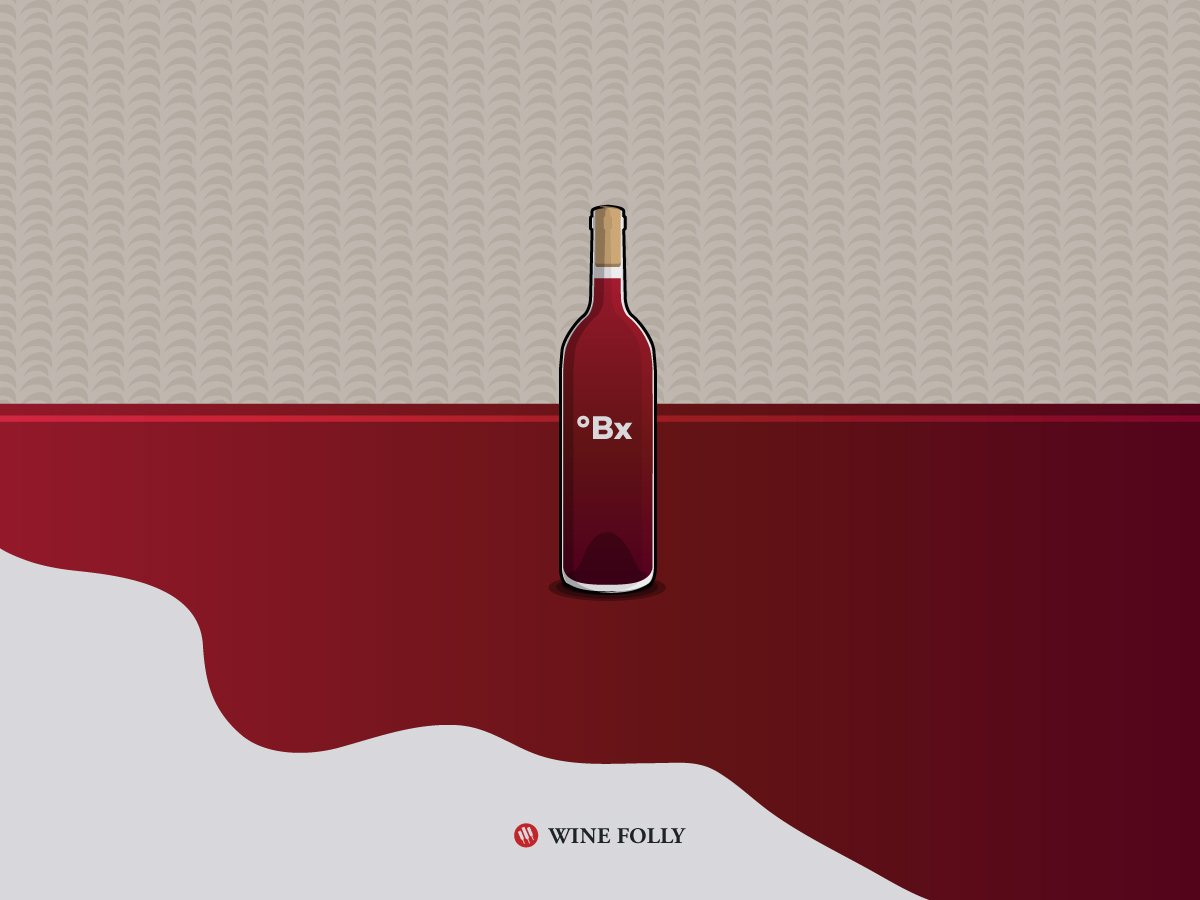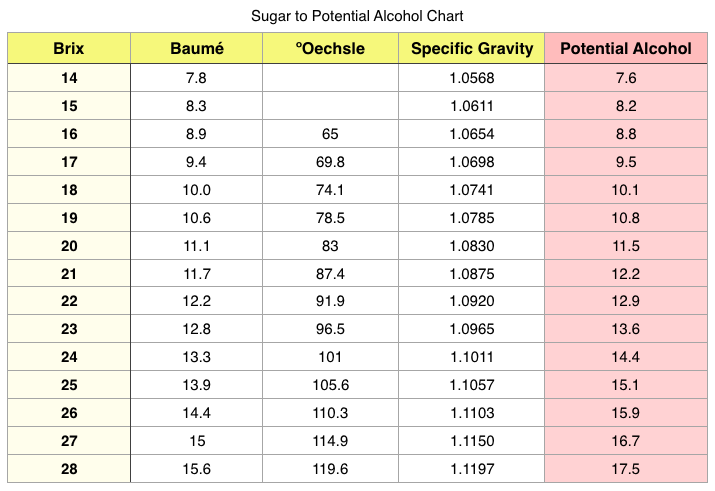If you’ve ever traveled to wine country or glanced at a wine bottle tech sheet then you’ve probably come across the words “Brix” with a number after it, such as 19.5, 23 or sometimes up to 26.
Brix measures must levels (sugar) in wine grapes that ultimately determines how much alcohol a wine will have. Learn the secrets to what Brix tells you on a wine stat sheet.
What is Brix?

Brix (°Bx) is a way to measure the potential alcohol content of a wine before it’s made by determining the sugar level in grapes. Each gram of sugar that’s fermented will turn into about a 1/2 gram of alcohol. Of course, different winemaking techniques will affect the final alcohol content, which is why Brix is interesting to us inquisitive wine explorers.
Brix Measures Alcohol Potential
Brix correlates to the potential alcohol content of a dry wine. If everything ferments perfectly at the winery, the Brix-to-alcohol chart looks like this:

Alcohol content is determined with an alcohol conversion factor of 0.59 and rounded to the nearest tenth. It’s common to see conversions from 0.55 – 0.65 depending on grape type, yeast strain, data collection error, etc.
The Secrets Brix Can Tell You About a Wine
If a Wine Has Lower Alcohol Than the Brix Scale Suggests
WINE WAS ‘WATERED BACK’: If the wine is dry and has less alcohol than the Brix scale suggests then the wine was most likely ‘watered back’ during vinification. ‘Watering back’ simply means some of the sweet grape juice is drained off and replaced with plain water. The leftover pink-tinted grape juice is used to create a rosé wine called Saignée. This technique is commonly practiced in warm climate regions where grapes become very sweet by the time they’re ready to be picked.
WINE IS SWEET: Another possibility is that the wine is sweet! For example, German law requires that all Spätlese Riesling wines have a minimum Brix level 20, but many of the wines only have 7.5% alcohol by volume (ABV). In this example, you could assume that the wine would have about 75 g/L of leftover grape sugar, called residual sugar (RS). By the way, 75 grams per liter RS is equal to about 3 teaspoons of sugar per 5 ounce (150 ml) serving.
If a Wine Has Higher Alcohol Than the Brix Scale Suggests
WINE WAS CHAPTALIZED: If the wine has higher alcohol than the Brix scale, then it’s possible that the winemaker added sugar or concentrated grape must to the fermentation to get the wine to have a higher alcohol level. This technique is called Chaptalization and it’s commonly practiced in cooler climate countries such as France where it’s very hard to ripen grapes properly.
For example, before 2011, Bourgogne Blanc (a.k.a. French Chardonnay) allowed a minimum must weight 153 g/L which would only make a wine with 8.5% ABV. Oddly enough, the minimum alcohol level was 10.5% ABV. Fortunately, France increased the minimum must weight to 170 g/L. Just so you know, French wine has some of the most rigid regulations in the world, so it’s nice to see that they adjusted the rules to ensure quality. Thank you France, that was nice of you.
How Brix is Measured
IN THE VINEYARD: Brix levels are collected in vineyards right before the harvest to determine whether the grapes are ready to get picked. In the vineyards, winemakers use a device called a refractometer where they can crush single grapes from different sections of their vineyard to see what sections are ripening first.
IN THE WINERY: Brix levels are collected again after the grapes have been pressed at the winery to analyze the final sugar content and the potential alcohol level of the wine. At this point, winemakers usually use a hydrometer, which is a simple mechanical tool that floats at a certain density similar to a cartisian diver or Galileo’s thermometer.
